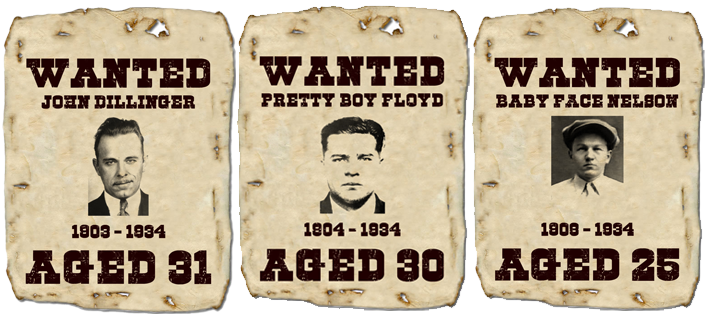What do these three Prohibition bank robbers all have in common?
Well, two things, they were all Public Enemy Number One and they all met their end in the same year through shootouts with the law.
1934 was certainly a bad year for these three men, and in this article we take a look at how their end came to be. Starting with the first to go, John Dillinger.
John Dillinger, Killed in Chicago, 22 July 1934
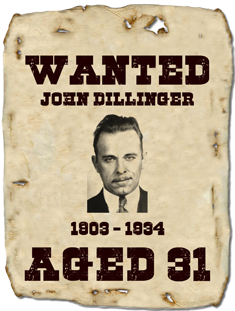
Dillinger’s death is shrouded by mystery and controversy on the events that unfolded that night.
The most common belief is that Dillinger left the theater and outside police had already setup position to arrest him. Dillinger is said to have failed to surrender, running into a side alley by the theater where a shoot-out ensued.
Dillinger was hit four times from six shots, three of them were minor and one hit him in the back of the neck severing two arteries, his spinal cord, and flying through his brain and out the front of his face.
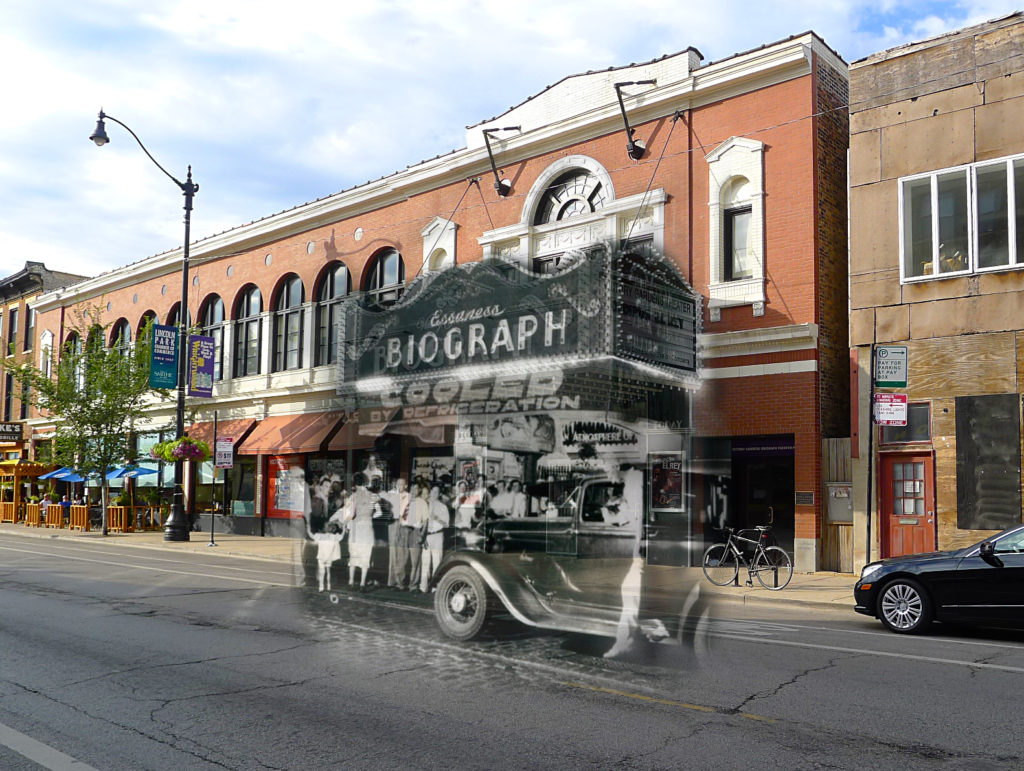
Dillinger dropped to the floor face first, dead. Handing over the status of Public Enemy Number One to Pretty Boy Floyd.
Pretty Boy Floyd, Killed in Ohio, 22 October 1934
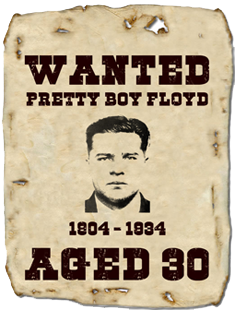
No one will know for sure the events that happened during the day of Pretty Boy’s death.
After he had finished eating lunch at a pool hall he hitched a ride, but was spotted by law officials in an East Liverpool neighborhood in Ohio. At this point Floyd jumped from the vehicle and headed towards a treeline, but before escaping he was struck in the arm by a bullet which knocked him to the ground.
This is where the story takes its first turn…
According to local law officials Floyd managed to get back to his feet after being hit by the bullet, but he was still far from safety and a whole team of officials opened fire killing him instantly.
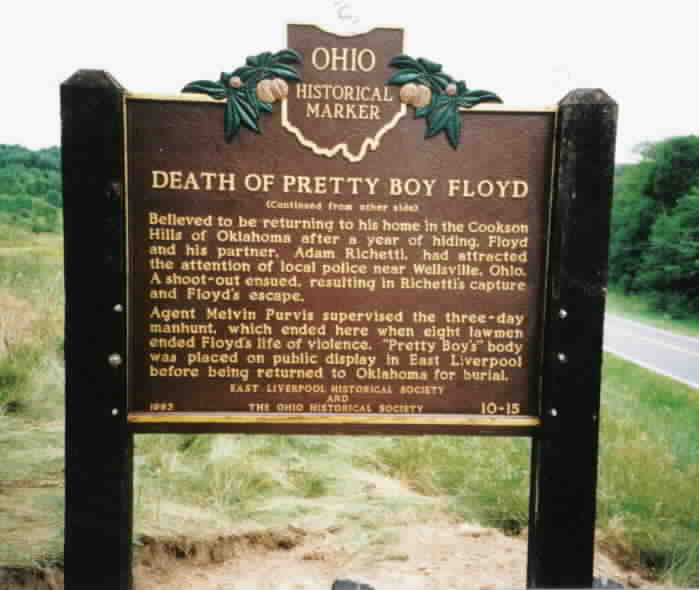
According to The FBI they claimed that they were searching the area in two separate cars and saw Floyd get out of a car with a .45 caliber pistol drawn. The FBI then opened fire on Floyd and claimed that his last words were:
“I’m done for. You’ve hit me twice”.
Chester Smith the local officer who was the man who shot Floyd in the arm later stated in an interview that he shot Floyd twice with the intention to wound him but not kill him.
However, Smith said that Floyd didn’t get up and run at that point he remained on the ground for Smith to go over and then disarm him. An FBI agent by the name of Melvin Purvis then walked up to Pretty Boy Floyd and ordered Smith to back away. Purvis and Floyd then proceeded to exchange words for a brief period of time, mostly Floyd responding to Purvis with curses. Smith then exclaimed that Purvis lost his patience with Floyd and ordered one of his agents to shoot him.
Smith was asked in 1979 if the killing of Pretty Boy Floyd was a cover up by the FBI, he stated:
“Sure was, because they didn’t want it to get out that he’d been killed that way.”
Public Enemy Number One would then go to the last remaining gangster, Baby Face…
Baby Face Nelson, Killed in Wilmette, 27 November 1934
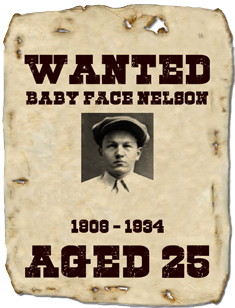
Baby Face Nelson’s death was one of the most violent, and the event even had its own name, ‘The Battle of Barrington” because it claimed the lives of two FBI agents and resulted in the death of notorious Chicago gangster Baby Face Nelson.
On the morning of November 27, Nelson, along with his wife and John Paul Chase, headed south in a stolen V8 Ford towards Chicago. Nelson, always keen to spot FBI agents, caught sight of a sedan driven in the opposite direction by agents Thomas McDade and William Ryan. The agents and the outlaw simultaneously recognized each other and after several U-turns by both vehicles, Nelson wound up in pursuit of the agents’ car. When Nelson’s powerful Ford caught up to the agents’ weaker sedan, Nelson and Chase opened fire on them.
Ryan and McDade returned fire, sped up, then pulled into a field and awaited Nelson and Chase, who had stopped pursuing.
McDade and Ryan were unaware that one of their shots had punctured the water pump of Nelson’s Ford. With Nelson’s Ford rapidly losing power, a Hudson automobile driven by two more agents, Herman Hollis (who had been one of the agents who fired the fatal shots that killed Dillinger in July) and Cowley, began pursuing the Ford.
With his pursuers attempting to pull alongside, Nelson had Helen Gillis, who was driving, steer into the entrance of Barrington’s North Side Park and stop. Hollis and Cowley overshot Nelson’s car by over 100 feet, and stopped at an angle. Upon exiting the vehicle’s passenger door, the agents took cover behind their car.
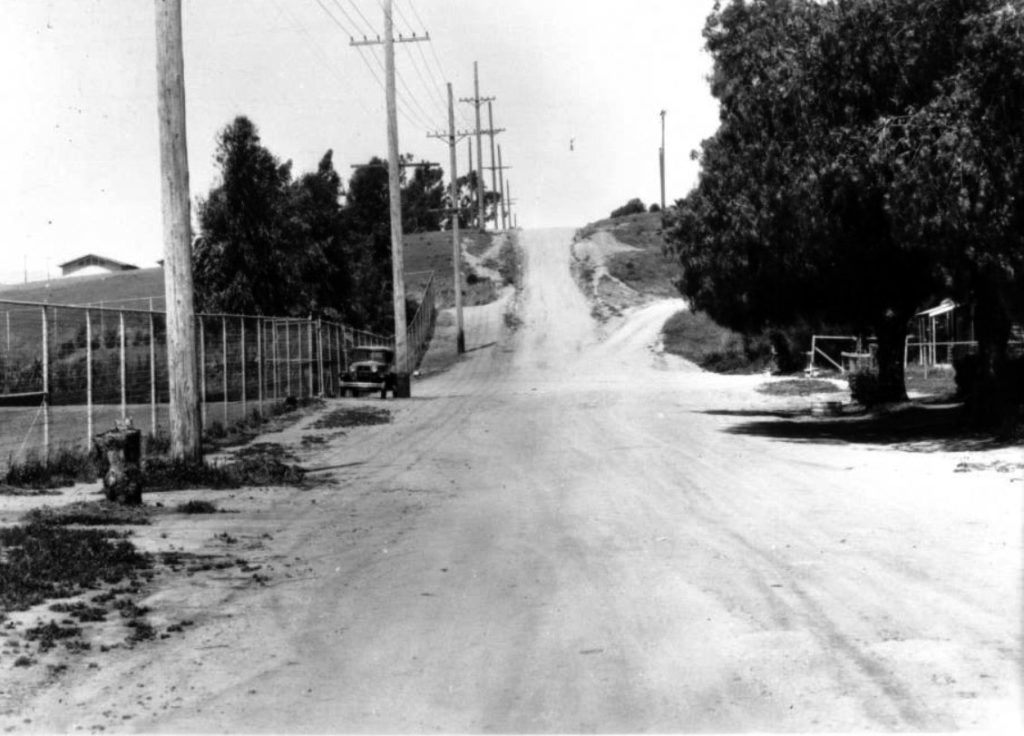
The ensuing shootout was witnessed by more than a dozen people.
In the gun battle a single .45 slug from Cowley’s machine gun struck Nelson in the abdomen, slicing through the liver and pancreas before exiting the lower back, this would be a fatal shot, but it didn’t end there.
Despite his wound, Nelson moved from behind the car and advanced toward both the agents firing off rounds at them as he approached. He took out both FBI agents, with two of his bullets hitting Agent Cowley in the chest and stomach, knocking him over. He would go on to die 10 hours after the shootout at 2am.
Hollis was then killed instantly when a bullet from Nelson hit him directly in the face.
Nelson and Chase then got behind the wheel of the agents’ car with Helen Gillis who has been hiding in a ditch, and fled the scene.
Nelson at this point had been shot a total of nine times, a single shot that had struck his abdomen and 8 of Hollis’s shotgun pellets that had hit his legs.
Nelson died in bed with his wife at his side, at 7:35 p.m.
Who became the next Public Enemy?
Well, in the following year of 1935 the the Bureau of Investigation, which was created in 1908, became the Federal Bureau of Investigation (FBI), and Alvin Karpis became the most wanted.
- Are Your Assets in Danger if Your Spouse Gets Into a Car Accident During Your Divorce? - July 23, 2024
- Breaking Down The Costs: How Much Does Crime Scene Cleanup Cost? - July 10, 2024
- Can Weed Make You Angry? - July 3, 2024






